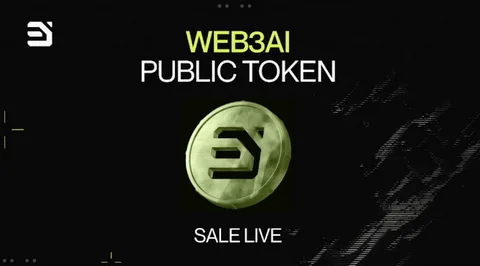Introduction
In the world of financial markets, technological advancements have given rise to powerful tools that can assist traders in making better, more informed decisions. Among these tools are trading bots, which have become increasingly popular due to their ability to execute trades with speed and precision, all while removing emotional biases from the decision-making process.
One of the most advanced platforms for using trading bots is ValueZone AI, which leverages sophisticated algorithms and machine learning to provide a competitive edge in the market. The financial markets are a battlefield of information, where each second counts and every decision can lead to significant profits or losses.
As markets have grown more complex, the role of technology has become increasingly important, allowing traders to analyze vast amounts of data quickly and efficiently. Trading Bots, powered by artificial intelligence platforms like ValueZone AI, is an essential tools for traders who seek to automate their trading strategies and capitalize on market opportunities without being glued to their screens.
However, just as with any tool, the effectiveness of trading bots depends on how and when they are deployed. To truly benefit from the capabilities of ValueZone AI, traders must understand the Optimal Times to activate their bots, based on market conditions, timeframes, and trading goals.
This post delves deep into the subject of timing, providing insights into how traders can optimize their use of trading bots with ValueZone AI to maximize profits and minimize risks. We’ll explore the best market conditions, specific timeframes, and tips for effectively utilizing these bots to enhance your trading strategy.

1. Understanding Market Volatility and Its Impact
One of the most significant factors influencing the Optimal Times to deploy Trading Bots with ValueZone AI is market volatility. Volatility refers to the rate at which the price of an asset fluctuates. When markets are highly volatile, prices can swing drastically in a short period, creating both opportunities and risks for traders.
High Volatility Periods
During times of high volatility, such as economic downturns, geopolitical events, or central bank announcements, markets often exhibit erratic price movements. This can create an environment ripe for Trading Bots to capitalize on price discrepancies. ValueZone AI can quickly analyze these rapid price movements and execute trades more efficiently than a human trader could, often taking advantage of short-term arbitrage opportunities.
However, while the potential for profit is high, so is the risk. Traders using ValueZone AI during these periods must ensure that their bots are configured with risk management strategies, such as stop-loss orders, to prevent large drawdowns.
Low Volatility Periods
On the other hand, low volatility periods may seem less exciting, but they can provide a stable environment for certain strategies, such as market-making or mean-reversion. These strategies rely on small price movements over a longer period, allowing ValueZone AI to execute trades based on patterns rather than high-speed price fluctuations. Understanding when the market is calm can be one of the Optimal Times to deploy trading bots, as it reduces the likelihood of being caught in sudden price swings.
2. Capitalizing on News Cycles and Major Events
Another key factor in determining the Optimal Times to deploy Trading Bots with ValueZone AI is the news cycle. Financial markets are often driven by news events, such as earnings reports, economic indicators, political decisions, or natural disasters. These events can trigger sharp movements in asset prices, presenting both opportunities and challenges for traders.
Pre-News Event Trading
One strategy that many traders use is to position themselves before a significant news event. For example, before a company releases its quarterly earnings report, markets often experience speculative price movements based on expectations. Trading Bots powered by ValueZone AI can be set to analyze sentiment and historical data related to these reports, allowing traders to position themselves for potential price movements once the news breaks.
Post-News Event Trading
After a major news event, markets often experience heightened volatility as traders react to the news. This can create a period of rapid price movements, offering opportunities for Trading Bots to execute quick trades based on short-term price momentum. ValueZone AI excels in these scenarios by quickly processing data and identifying trends that may not be immediately visible to human traders.
However, it’s essential to deploy Trading Bots with caution during these times, as post-news price movements can be unpredictable. For this reason, it’s crucial to have a well-defined risk management strategy when deploying bots after significant news events.
3. Time of Day Considerations: When Are Markets Most Active?
The time of day is another important consideration when determining the Optimal Times to deploy Trading Bots with ValueZone AI. Financial markets operate 24 hours a day, but not all hours are created equal. Certain periods are characterized by high liquidity and volatility, while others may be relatively quiet, offering different trading opportunities.
Overlapping Market Hours
One of the most active times in the financial markets is during the overlap between major trading sessions. For example, the overlap between the London and New York stock exchanges typically occurs between 8 AM and 12 PM EST.
This period sees a significant amount of trading volume and liquidity, as market participants from both regions are active. Trading Bots using ValueZone AI can take advantage of this increased activity to execute trades more efficiently.
During these high-liquidity periods, spreads (the difference between the buy and sell price) tend to be narrower, which can be advantageous for traders looking to capitalize on short-term price movements. Additionally, the increased activity can lead to more predictable trends, which Trading Bots can exploit for profit.
Quiet Market Hours
In contrast, periods of lower activity, such as the early Asian trading session or weekends in the cryptocurrency market, may provide a more stable environment for specific strategies. During these times, Trading Bots can be programmed to focus on mean-reversion strategies or range-bound trading, where the price tends to oscillate between support and resistance levels.
While the potential for large profits may be lower, the reduced competition and noise can make these times some of the Optimal Times for deploying bots that rely on market consistency.
4. Choosing the Right Asset Class and Trading Strategy
Different asset classes behave differently under various market conditions, and understanding how each class performs can help traders identify the Optimal Times to deploy Trading Bots with ValueZone AI. Whether you’re trading stocks, cryptocurrencies, forex, or commodities, each market has unique characteristics that influence the success of automated trading strategies.
Cryptocurrency Markets
Cryptocurrencies are known for their high volatility, and the 24/7 nature of the market means there are always opportunities for trading. However, not all times are equal in the crypto world. Key moments, such as Bitcoin halving events or major regulatory announcements, can lead to significant price movements.
For cryptocurrency traders, some of the Optimal Times to deploy Trading Bots with ValueZone AI might include moments when volatility is expected to increase, such as during high-profile events. Additionally, since cryptocurrency markets don’t close, traders can use Trading Bots during off-hours in traditional markets, such as weekends or late at night, to capture opportunities in the crypto space while other markets are dormant.
Stock and Forex Markets
For stocks and forex, the Optimal Times to use Trading Bots with ValueZone AI often align with the opening and closing hours of major exchanges. For example, the first hour of trading on the New York Stock Exchange is often characterized by heightened volatility as traders react to overnight news and pre-market activity.
Similarly, the forex market is particularly active during the overlap of major sessions, such as the London-New York overlap mentioned earlier. ValueZone AI trading bots can be set to exploit these windows of heightened activity, using momentum-based strategies to capitalize on short-term price swings.
Conclusion: Mastering Timing with ValueZone AI
In the fast-paced world of financial markets, timing is everything. Trading Bots powered by ValueZone AI offer a powerful tool for traders looking to automate their strategies and capture market opportunities around the clock.
However, to truly maximize the potential of these bots, traders must deploy them during the Optimal Times, whether based on market volatility, news cycles, time of day, or the asset being traded.
Understanding when to deploy your Trading Bots with ValueZone AI can make the difference between success and failure in the market. By analyzing market conditions and aligning your bot’s activity with these insights, you can improve your overall trading performance and reduce unnecessary risks.
Have you tried using Trading Bots with ValueZone AI? Share your experiences and insights in the comments below! We’d love to hear about your strategies and how you determine the Optimal Times for deploying trading bots.






